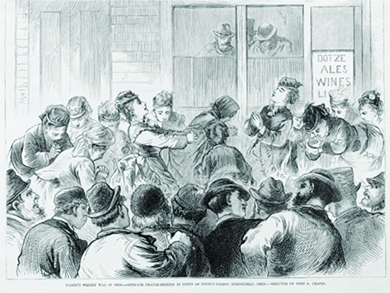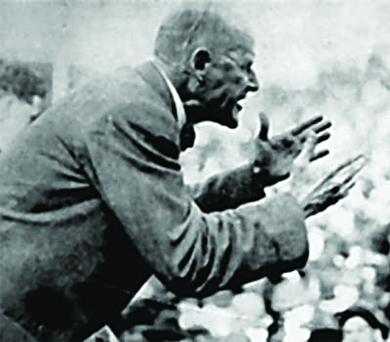| << Chapter < Page | Chapter >> Page > |

The Progressive Era also witnessed a wave of radicalism, with leaders who believed that America was beyond reform and that only a complete revolution of sorts would bring about the necessary changes. The radicals had early roots in the labor and political movements of the mid-nineteenth century but soon grew to feel that the more moderate Progressive ideals were inadequate. Conversely, one reason mainstream why Progressives felt the need to succeed on issues of social inequity was because radicals offered remedies that middle-class Americans considered far more dangerous. The two most prominent radical movements to emerge at the beginning of the century were the Socialist Party of America (SPA), founded in 1901, and the Industrial Workers of the World (IWW), founded in 1905, whose emphasis on worker empowerment deviated from the more paternalistic approach of Progressive reformers.
Labor leader Eugene Debs, disenchanted with the failures of the labor movement, was a founding member and prominent leader of the SPA ( [link] ). Advocating for change via the ballot box, the SPA sought to elect Socialists to positions at the local, state, and federal levels in order to initiate change from within. Between 1901 and 1918, the SPA enjoyed tremendous success, electing over seventy Socialist mayors, over thirty state legislators, and two U.S. congressmen, Victor Berger from Wisconsin and Meyer London from New York. Debs himself ran for president as the SPA candidate in five elections between 1900 and 1920, twice earning nearly one million votes.

As had been true for the Populist and Progressive movements, the radical movement suffered numerous fissures. Although Debs established a tenuous relationship with Samuel Gompers and the American Federation of Labor, some within the Socialist Party favored a more radical political stance than Debs’s craft union structure. As a result, William “Big Bill” Haywood formed the more radical IWW, or Wobblies , in 1905. Although he remained an active member of the Socialist Party until 1919, Haywood appreciated the outcry of the more radical arm of the party that desired an industrial union approach to labor organization. The IWW advocated for direct action and, in particular, the general strike, as the most effective revolutionary method to overthrow the capitalist system. By 1912, the Wobblies had played a significant role in a number of major strikes, including the Paterson Silk Strike, the Lawrence Textile Strike, and the Mesabi Range Iron Strike. The government viewed the Wobblies as a significant threat, and in a response far greater than their actions warranted, targeted them with arrests, tar-and-featherings, shootings, and lynchings.
Both the Socialist Party and the IWW reflected elements of the Progressive desire for democracy and social justice. The difference was simply that for this small but vocal minority in the United States, the corruption of government at all levels meant that the desire for a better life required a different approach. What they sought mirrored the work of all grassroots Progressives, differing only in degree and strategy.
Progressive campaigns stretched from the hurricane-ruined townships of Texas to the slums of New York, from the factory floor to the saloon door. But what tied together these disparate causes and groups was the belief that the country was in dire need of reform, and that answers were to be found within the activism and expertise of predominantly middle-class Americans on behalf of troubled communities. Some efforts, such as the National Child Labor Committee, pushed for federal legislation; however, most Progressive initiatives took place at the state and local levels, as Progressives sought to harness public support to place pressure on politicians.
At the beginning of the twentieth century, a more radical, revolutionary breed of Progressivism began to evolve. While these radical Progressives generally shared the goals of their more mainstream counterparts, their strategies differed significantly. Mainstream Progressives and many middle-class Americans feared groups such as the Socialist Party of America and the Industrial Workers of the World, which emphasized workers’ empowerment and direct action.

Notification Switch
Would you like to follow the 'U.s. history' conversation and receive update notifications?